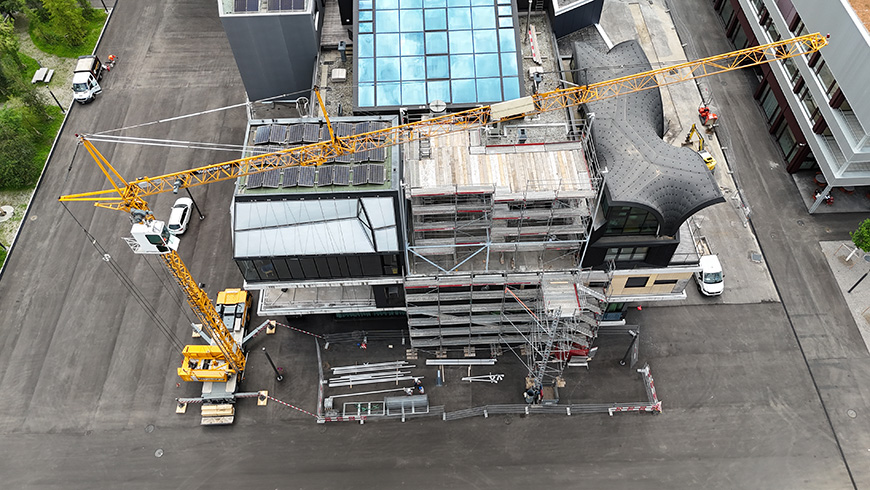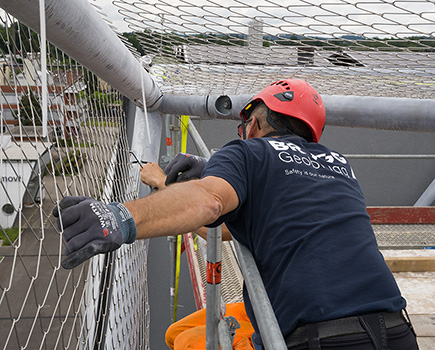Construction for DroneHub gets off the ground
Empowering aerial innovation for a sustainable future
Starting in early July, the latest NEST Unit at the Empa and Eawag research and innovation building, the DroneHub, has begun to take shape. Its cage, separating the research facility from the environment, is already finished. It enables unrestricted deployment of robots and drones under an open sky. During August, the laboratory facility will be added, which completes phase one of DroneHub's development.

The first steps on the path to a brand new research platform for autonomous robots are taken: The DroneHub can already be recognized, thanks to its characteristic façade. After mounting the scaffolding, the support structure, which forms the cage for the aviary, was installed within a week. This steel ribcage consists of almost 30 individually shaped beams. Following its completion, a steel mesh was mounted. It separates the open-air research facility from the outside world. Although the outer layer of construction seems almost finished, there is still vast potential for the DroneHub: every research topic requires very specific infrastructure. Thus, the possibilities for potential research applications inside the DroneHub will continue to grow, even after the NEST Unit is opened up.

As a bespoke research facility for the Laboratory of Sustainability Robotics of Empa, EPFL and Imperial College London, the DroneHub represents a further investment in research and development of aerial innovation. The open-air laboratory serves as a bridge between indoor and outdoor research facilities as well as between built and natural environment. Here, the international team, led by Mirko Kovac, wants to explore not only the extent to which robots can take on tasks in the field of infrastructure inspection, maintenance and repairs that are either dangerous or challenging for humans, but also a diverse portfolio of aerial robotic development for environmental sensing in forests and wetlands.
Aerial maintenance and repair work

Therefore, as a unique feature, the AAM wall, short for Aerial Additive Manufacturing wall, is a crucial installation inside the DroneHub. It enables researchers, for instance, to install various surfaces to create flexibility in the representation of vast amounts of different scenarios. Special maintenance drones are then tested to detect any damage on the panels and repair them autonomously, using aerial 3D printing technology. According to the research team, robots such as these should carry out most of the maintenance work on our buildings in the near future.
Additionally, the team plans to further increase the research infrastructure over time. In order to enable projects concerned with environmental sensing and application of biodegradable robots, for instance, a small-scale biosphere inside the research facility is already on the horizon. Potential industry partners are also welcome, as the Laboratory of Sustainability Robotics aims for a wide spectrum of suitable applications for their research. The official opening ceremony of the DroneHub will be in November 2024.
Enrico Marchesi
Innovation Manager NEST
Phone +41 58 765 4705
enrico.marchesi@empa.ch






